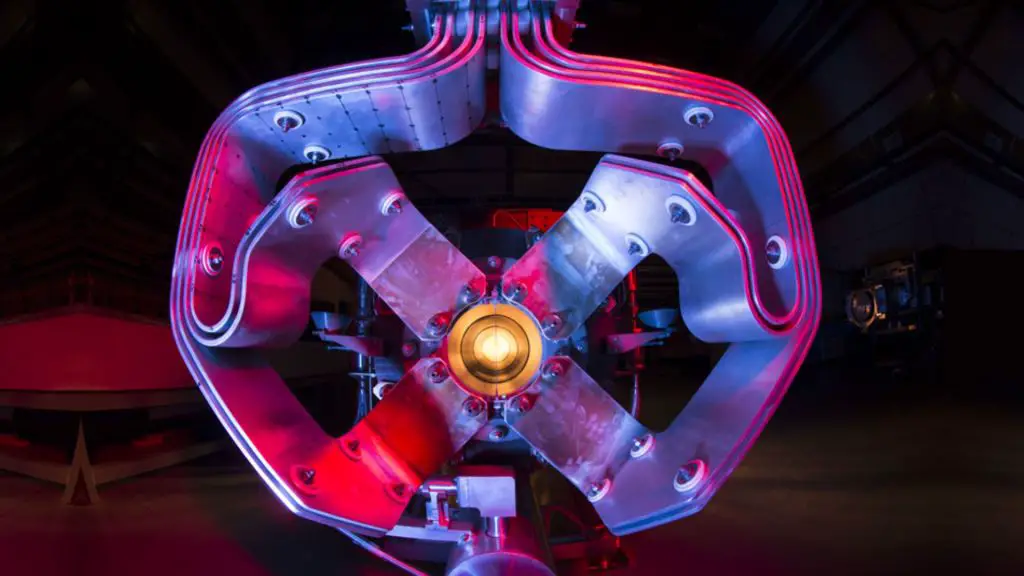Researchers at the US Department of Energy’s Fermi National Accelerator Laboratory are trying to address the immense challenge of building targets for particle detectors that can withstand the extreme conditions generated in neutrino experiments.
These experiments rely on the controlled collision of high-energy protons with specialized targets to generate neutrinos.
However, the targets, subjected to intense proton beams, experience rapid heating, pressure waves, and nuclear reactions, and can quickly degrade their structural integrity.
“If the target can’t survive the violent interaction with the beam, then the experiment is off and the experiment cannot take data,” said Patrick Hurh, an engineer at Fermilab.
Neutrino generation at Fermilab
Neutrinos are subatomic particles with unique properties that make them ideal for studying a wide range of phenomena, from the evolution of the universe to the properties of the most energetic cosmic events.
However, their elusive nature necessitates the use of powerful particle accelerators and sophisticated detector systems.
At Fermilab, protons are accelerated to near-light speed and directed onto targets, typically made of graphite.
“In the case of generating a beam of neutrinos, we use a graphite target, which is carbon,” explained Hurh.
The interaction generates a variety of secondary particles, including pions, which subsequently decay into neutrinos. These neutrinos then form a beam that travels to distant detectors for analysis.
“Some of these secondary particles generated from the collisions are electrically charged pions,” added the researchers in a press release.
“Because these pions are charged, researchers can steer their trajectories with magnetic fields.”
Extreme impact on targets
The process of generating neutrinos places immense stress on the targets. The impact of the proton beam causes rapid heating, with temperatures rising hundreds of degrees in microseconds.
This rapid temperature increase leads to thermal expansion and generates intense pressure waves within the target material.
Furthermore, the proton collisions induce nuclear reactions, producing helium and hydrogen gas within the target.
These gasses can accumulate and form bubbles, weakening the material and compromising its structural integrity.
Over time, the cumulative effects of these processes can lead to target failure. And, if the target fails, the experiment can come to a halt.
Fermilab is developing resilient targets
The Fermilab team is actively engaged in developing new materials and techniques to enhance the resilience of targets.
“Researchers need to overcome three challenges to make a lasting target: radiation damage, high temperatures and stress from thermal expansion,” remarked the press release.
Nanofibers, incredibly thin threads with exceptional strength and flexibility, are being investigated for their ability to better absorb the shock of the proton beam.
“A nanofiber developed by Fermilab engineer Sujit Bidhar is being researched as a potential target material due to its ability to mitigate thermal shock and be more resistant to radiation damage,” highlighted the press release.
High-entropy alloys, a new class of materials with superior resistance to heat and radiation, are also being tested for critical components in the target system.
“At Fermilab, we study the effects of radiation damage and thermal shock resistance on graphite, beryllium, titanium alloys and novel materials,” asserted Frederique Pellemoine, a scientist at the lab.
The new frontier in neutrino experiments
One of the most ambitious neutrino experiments on the horizon is the Long Baseline Neutrino Facility (LBNF) and Deep Underground Neutrino Experiment (DUNE).
This project will send a beam of neutrinos from Fermilab’s Illinois campus to detectors located a mile underground in South Dakota.
Since the LBNF/DUNE target will be subjected to intense proton pulses every second, its durability is a critical factor.
“About every second, a high-intensity pulse of protons will hit the target for the LBNF/DUNE experiment, and billions of neutrinos will be produced,” concluded Chris Densham, the high-power targets group leader at Rutherford Appleton Laboratory in Oxfordshire, England.


Leave a Comment